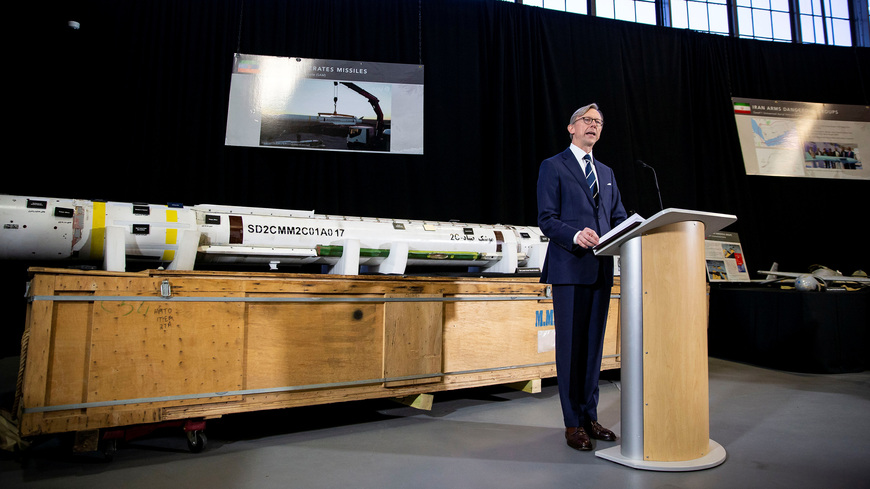
The reason why the U.S. pulled out of the Iran nuclear deal two years after its passage was because the track record of compliance by the Iranian regime was littered with failure and the inherent flaw in the agreement of not restraining Iranian regime’s aggression in other areas such as terrorism became problematic.
The inherent flaws in the regime lie at the heart of its style of government: a religious theocracy.
There is no checks or balance system in Iran. The ultimate authority is vested in the supreme religious leader who rules with the near-autonomy of monarchs of old. An interesting irony considering the Islamic revolution in the first place deposed the Shah.
But because of the lack of accountability within the regime to only a select elite few, the future of successful implementation of the nuclear deal was dead on signing.
When the Obama administration and rest of the European Union withdraw demands that Iran comply in areas such as sponsorship of terrorism, destabilization of its neighbors and improvements in human rights at home, all the leverage the world had on Iran evaporated.
The Iran lobby, specifically the National Iranian American Council, have contended that to include such restrictions would have doomed the deal to failure. The reverse has prophetically come true: by not including those provisions, the deal was indeed doomed to fail, and it has.
The bloody trail of Iranian extremism has been well documented, and the Iran lobby has never spoken harshly against that record, only excusing the regime with faint calls for reform and blaming every misstep by the mullahs as being provoked by the U.S. from withdrawing from the nuclear deal.
The harsh truth the Iran lobby has vigorously sought to cover up is the strategic plan the mullahs have to build its own Islamic version of the Warsaw Pact by converting or controlling its neighbors to its brand of extremism and using proxies to institute insurrections and wars.
That plan was worked to some degree with the Iranian regime using Hezbollah and Afghan mercenaries to stem the civil war in Syria, Shiite militias in Iraq to control that government and Houthi rebels to overthrow Yemen and threaten regional adversary Saudi Arabia.
But those conflicts haven’t been enough for Iran, even as the mullahs direct the Revolutionary Guard Corps and its Quds Force to supply more arms, weapons and cash to other militants further afield.
Evidence for these efforts was put on display when Brian Hook, special representative for Iran and senior policy advisor to the U.S. secretary of state, released information that the Iranian regime was violating the United Nations arms export ban by supplying militants across the Middle East and continuing to build out its ballistic missile program unabated.
At a military hangar in Washington, Hook showed reporters a display of seized Iranian weapons that he said is much larger than it was a year ago. He then elaborated on each weapon on display and where it was found, including a collection of guns, rockets, drones and other gear.
“We need to get serious about going after this stuff,” Hook told reporters.
Some of the weapons had been intercepted in the Strait of Hormuz en route to Shia fighters in the region while others had been seized by the Saudis in Yemen, the Pentagon said.
The centerpiece of the display was what Hook said is a Sayyad-2 surface-to-air missile system that the Saudis had intercepted in Yemen this year.
Farsi writing along the white rocket’s side helped prove it was Iranian made, Hook added.
“The conspicuous Farsi markings is Iran’s way of saying they don’t mind being caught violating UN resolutions,” Hook told reporters, adding the missile was destined to Houthi rebels in Yemen.
Hook said the seized weapons are “clear and tangible evidence” that Iran is fueling instability in the Middle East.
Iran has the largest ballistic force in the region, Hook said, with 10 ballistic missile systems in its inventory or under development. Missile development and testing has increased in recent years, he added.
Last year, Iran launched a medium-range missile believed to be the Khorramshahr, he said. It can carry a payload of more than a half ton and could be used to carry nuclear warheads. Its suspected range is 1,200 miles, which puts Europe in range.
Fajr rockets intended for the Taliban were recovered by the Afghan National Army in Afghanistan’s Helmand province near Kandahar Airfield, Hook said.
Bahrain provided captured Iranian small-arms weaponry found on their territory, which were given to Shiite militant groups to carry out attacks against the government. They include sniper rifles, rocket-propelled grenades, AK-47 assault rifle variants and hand grenades, Hook said.
Since 2006, the Iranian regime has supplied Hezbollah in Lebanon with thousands of precision rockets, missiles and small arms, Hook said. It now has more than 100,000 rockets or missiles in its stockpile.
The scope and size of the munitions being produced by the Iranian regime and smuggled throughout the Middle East puts to rest any concept floated by the Iran lobby of Iranian “moderation” following the nuclear deal.
In fact, it has been a year since U.S. Ambassador to the United Nations Nikki Haley was at a similar event to highlight the dangers posed by Iran’s proliferation of missiles and other weapons across the Middle East, only to see this year’s display of captured Iranian weaponry dwarf last year’s display.
Laura Carnahan